Boulder, CO Pollen and Allergy Report for Summer 2023
Pollen Allergy Trends in Boulder, CO
When is pollen lowest in Boulder, CO?

February
Lowest month total PPM
Avg. PPM
When is pollen highest in Boulder, CO?

March
Highest month total PPM
Avg. PPM
How does pollen in Boulder, CO compare to Colorado?
Boulder has a higher average PPM than the state of Colorado.
Boulder yearly avg PPM:
Colorado yearly avg PPM:
How does pollen in Boulder, CO compare to the USA?
Boulder has a higher average PPM than the USA.
Boulder yearly avg PPM:
USA yearly avg PPM:
Is pollen worse this year in Boulder, CO?
Spring 2023 was worse than spring 2022.
Spring 2023 PPM:
Spring 2022 PPM:
Average PPM in Boulder, CO
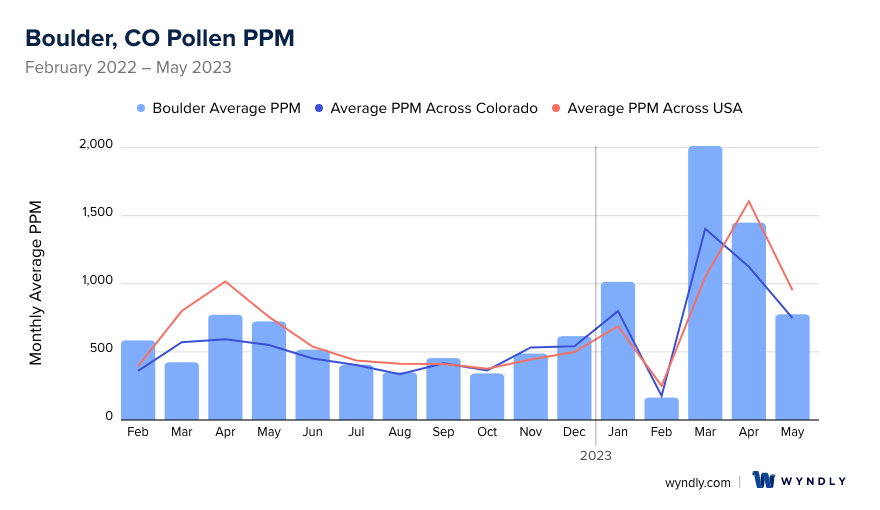
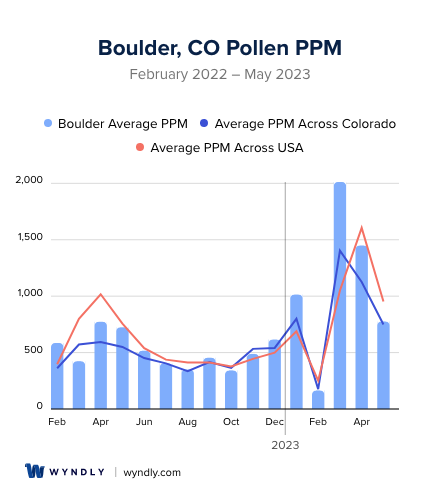
Boulder, CO Pollen and Allergy Breakdown by Month
Grass
When is grass pollen highest in Boulder, CO?
February has the highest grass pollen in Boulder, CO with an average PPM of
When is grass pollen lowest in Boulder, CO?
December has the lowest grass pollen in Boulder, CO with an average PPM of
Tree
When is tree pollen highest in Boulder, CO?
March has the highest tree pollen in Boulder, CO with an average PPM of
When is tree pollen lowest in Boulder, CO?
September has the lowest tree pollen in Boulder, CO with an average PPM of
Weed
When is weed pollen highest in Boulder, CO?
April has the highest weed pollen in Boulder, CO with an average PPM of
When is weed pollen lowest in Boulder, CO?
February has the lowest weed pollen in Boulder, CO with an average PPM of
Boulder, CO Pollen Monthly Breakdown by Pollen Type
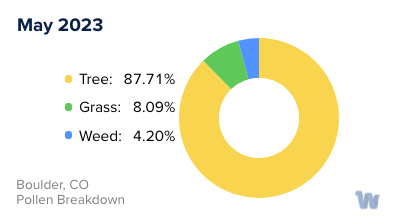
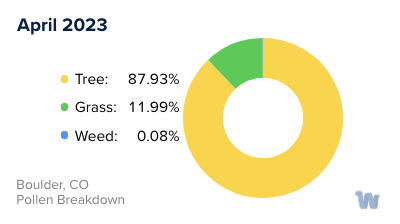
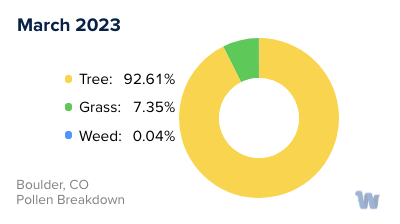
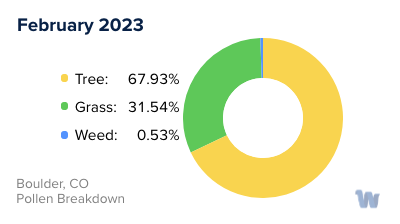
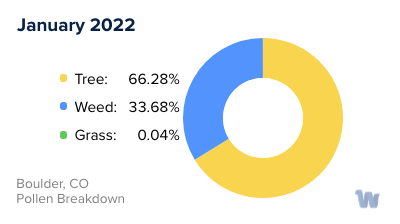
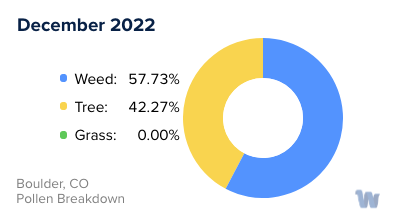
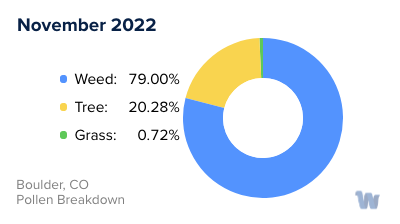
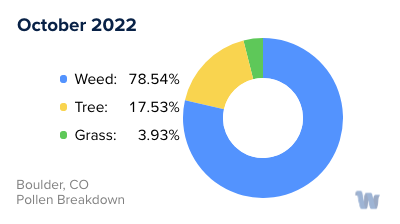
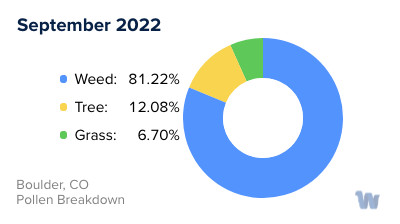
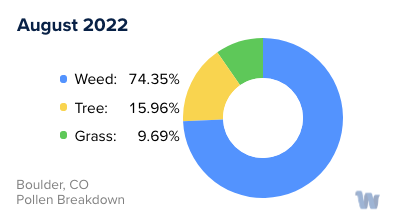
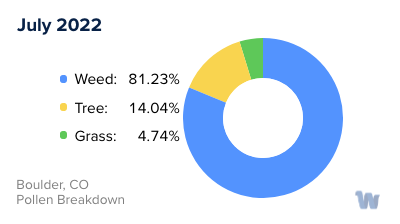
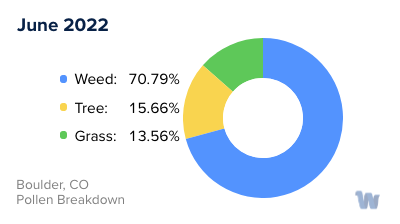
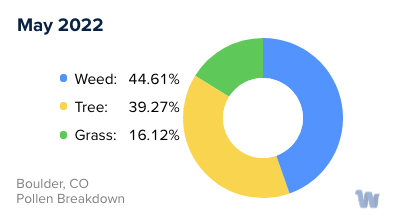
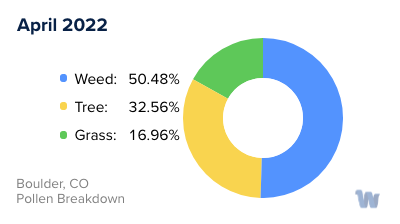
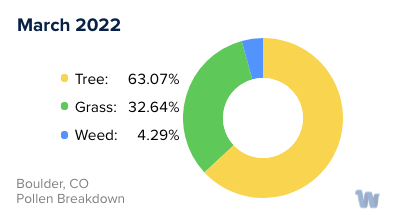
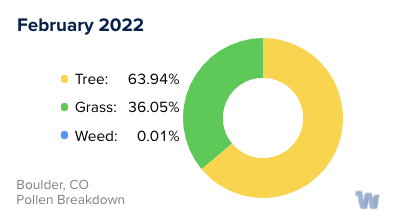
Pollen and Hay Fever in Boulder, CO
Boulder, Colorado, known for its picturesque landscapes and outdoor activities, is also home to a diverse array of plant species that produce pollen. For allergy sufferers, this can lead to seasonal discomfort commonly known as hay fever. Understanding the types of pollen and the seasons when they are most prevalent can help individuals better manage their symptoms.
Pollen allergies are typically triggered by certain types of pollen that are airborne and easily inhaled. In Boulder, common sources of pollen include trees, grasses, and weeds. Tree pollen is most abundant during the spring, with species such as juniper, cottonwood, and aspen being major contributors. The grass pollen season typically follows, peaking during the summer months, with species like Timothy grass and Bermuda grass being prominent in the area. Lastly, weed pollen, including ragweed and sagebrush, becomes prevalent in late summer and early fall.
Seasonal patterns can vary from year to year depending on weather conditions, but generally, the pollen counts tend to be highest on dry, warm, and windy days. Boulder's dry climate and gusty winds can exacerbate pollen dispersion, making allergy symptoms more pronounced during these periods.
Individuals with hay fever may experience a range of symptoms, including sneezing, nasal congestion, runny nose, itchy eyes, and throat irritation. These symptoms can significantly impact a person's quality of life, especially during peak pollen seasons. Those with pollen allergies are encouraged to monitor local pollen forecasts, which provide information about the types and quantities of pollen in the air.
While avoidance measures can be helpful, such as staying indoors during high pollen counts or using air purifiers, it's important for individuals with allergies to consult with healthcare professionals for appropriate diagnosis and management strategies.
In conclusion, Boulder, Colorado, experiences distinct seasons of pollen allergies, driven by various tree, grass, and weed species. Awareness of the predominant types of pollen and their corresponding seasons can empower individuals to take proactive steps in managing their hay fever symptoms and enjoying the beauty of Boulder's outdoor offerings.

